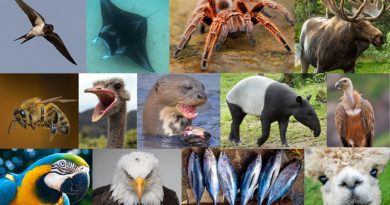10 Curiosities About Foods That You Probably Didn’t Know
Processing and Industrialization of Foods
These food curiosities show us that there is much more to discover about the foods we consume daily. The history, manufacturing processes, and even scientific characteristics can reveal fascinating facts about what we put on our plates. By exploring these curiosities, we can further appreciate the diversity and complexity of the foods around us. Check out the curiosities now:
Apples float in water: Have you ever wondered why apples float in water? This happens because they have a unique cell structure that makes their density lower than that of water. Therefore, when you place an apple in a container with water, it will float.
White chocolate is not really chocolate: Despite the name, white chocolate does not contain cocoa mass, which is one of the main ingredients of traditional chocolate. Instead, it is mainly made from cocoa butter, sugar, and milk. For this reason, some experts do not consider white chocolate as true chocolate.
Bananas are berries, but strawberries are not: Although many consider bananas as fruits, they are actually classified as “berries.” This is because they grow from a flower with a single ovary and have seeds. On the other hand, the strawberry is not a true berry, as it grows from a flower with multiple ovaries.
Honey never spoils: Honey is a food that has a surprisingly long shelf life. Due to its antibacterial properties and low moisture content, honey can last indefinitely if stored correctly. Even if honey crystallizes over time, it can be easily heated and returned to its liquid consistency.
The wasabi served in restaurants is often not real: Wasabi, a spicy green paste often served with sushi, is known for its intense flavor. However, most restaurants do not use real wasabi but a mixture of horseradish, mustard, and green dye. True wasabi is rare and expensive, being challenging to cultivate and requiring specific growing conditions.
Ketchup was once used as medicine: In the 19th century, ketchup was considered a medicine rather than a condiment. It was believed that tomatoes, the main ingredient in modern ketchup, had medicinal properties, and ketchup was recommended to treat digestive problems and even as a tonic for children.
Salmon can change color: Salmon is known for its characteristic pink color, but did you know that its color can vary? The pink color comes from carotenoids found in the salmon’s diet, such as krill and shrimp. Depending on the salmon’s diet, its color can range from light pink to deep red.
Carrots were not always orange: Although carrots are known for their vibrant orange color, they originally had a variety of colors, such as purple, yellow, and white. The orange color was developed in the Netherlands in the 17th century as a tribute to the House of Orange, the Dutch royal family.
Decaffeinated coffee still contains caffeine: Decaffeinated coffee is popular among those who want to reduce caffeine consumption, but did you know that it still contains a small amount of this stimulant substance? The process of removing caffeine from decaffeinated coffee is not 100% effective, leaving residual traces. However, the amount of caffeine present is significantly lower than in regular coffee.
Worcestershire sauce contains anchovies: The famous Worcestershire sauce, used in various dishes such as meats and sauces, contains anchovies in its recipe. Although the flavor of anchovies is subtle in the final sauce, it is an essential ingredient to create its unique and characteristic taste.
If you enjoyed the article “10 Curiosities About Foods That You Probably Didn’t Know,” don’t forget to leave your comment and follow the articles this week; we have many exciting updates to share with you. Enjoy the read!




